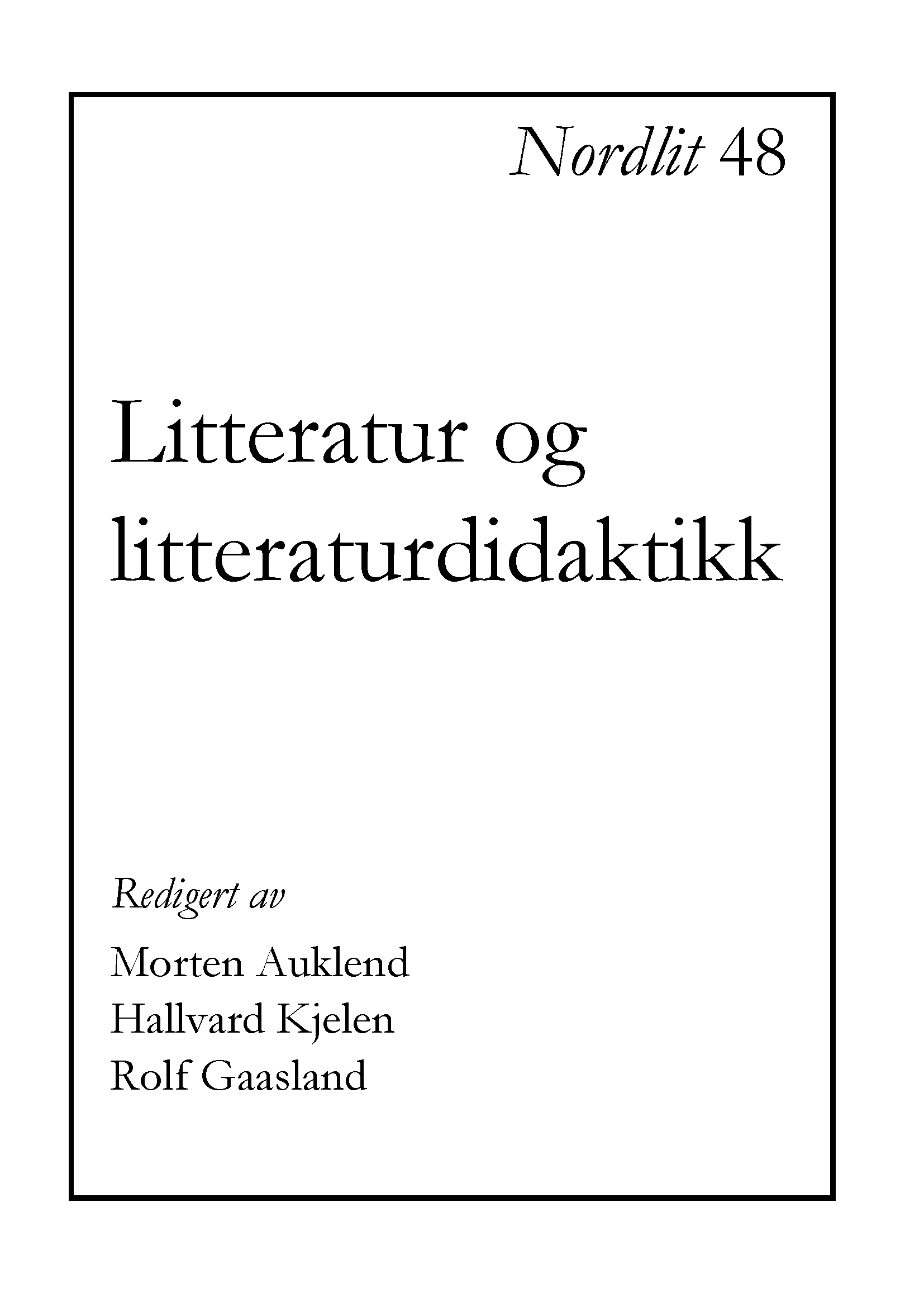Humor på alvor i litteraturundervisninga med «Anekdote» av Herman Wildenvey
DOI:
https://doi.org/10.7557/13.6333Keywords:
humour, laughter, poems, literary education, Herman WildenveyAbstract
This article studies the potential of paying attention to humour in texts in teaching literature. It is based on different approaches to the poem «Anekdote» (1911) by the Norwegian author Herman Wildenvey. The article is inspired by discussions with teacher students about the humour in the poem. Central questions are whether the poem is funny or not and, if it is funny, what or whom do we laugh at? And also: How can this poem be read in the literature class? Different answers to these questions are discussed in light of theories of humour. The article discusses how different approaches to the humour in the poem imply different interpretations of it. It is of particular interest to study values and moral attitudes that the poem may convey, and to reflect on the role of humour in this aspect. Humour may serve different functions and is not always controllable, but it is often linked to the ambiguity of language. Finally, the article argues for valuing reflections on humour in litterature teaching, both in teacher training and in schools.
References
Amir, Lydia B. 2013. «Philosophy’s attitude towards the comic. A re-evaluation». I European Journal of Humour Research 1(1) p.6-21. DOI: http://dx.doi.org/10.7592/EJHR2013.1.1.amir
Andersen, Per Thomas. 2012. Norsk litteraturhistorie. Oslo: Universitetsforlaget.
Baudelaire, Charles. 1987. «Om latterens vesen og allment om det komiske i den bildende kunst». I Kunsten og det moderne liv, 43-64. Oslo: Solum Forlag.
Bergson, Henri. 1993. Latteren. Et essay om komikkens væsen [1900]. København: Forlaget politisk revy.
Bjørlo, Berit Westergaard. 2021. «Humor i to nyere norske diktbildebøker: Pling i bollen og 123 for barske barn». I Barnboken, 44. DOI: https://doi.org/10.14811/clr.v44.607
Critchley, Simon. 2002. On Humour. New York: Routledge.
Cross, Julie. 2010. Humour in Contemporary Junior Literature. Taylor & Francis Group. https://doi.org/10.4324/9780203832943
Dahl, John Magnus Ragnhildson. 2020. «Den polariserande humoren». I Samtiden 4 – 2020, 67-73.
Gabrielsen, Ida Lodding, Marte Blikstad-Balas og Michael Tengberg. 2019. «The role of literature in the classroom: How and for what purposes do teachers in lower secondary school use literary texts?» L1-Educational Studies in Language and Literature, 19, 1-32. https://doi.org/10.17239/L1ESLL-2019.19.01.13
Gabrielsen, Ida Lodding. 2019. «’Virkemidler er det vi bruker for å oppnå sjangertrekkene.’ Skjønnlitteraturens rolle i 178 norsktimer på ungdomstrinnet». I Norsklæreren 4, 2019. 28-36.
Hellesnes, Jon. 2007. «Crux, den tenksame klovnen». I Om livstolking, 13-28. Oslo: Det Norske Samlaget.
Horkheimer, Max og Theodor Adorno. 2011. [1947]. Opplysningens dialektikk. Spartacus forlag.
Labov, William og Joshua Waletsky. 2006. [1966]. «Narrative Analysis: Oral Versions of Personal Experience». I P. Coubley (red.), Communication Theories, Critical Concepts in Media and Cultural Studies, band III, s. 28–63. London & New York: Routledge.
Lothe, Jacob, Christian Refsum og Unni Solberg. 1997. Litteraturvitenskapelig leksikon. Kunnskapsforlaget.
Lotherington, Tom. 2009. «Herman Wildenvey». I Norsk biografisk leksikon. Store norske leksikon. Lese mars 2021 frå https://nbl.snl.no/Herman_Wildenvey.
Morreal, John. (1983). Taking Laughter Seriously. Albany, NY: State University of New York Press.
Nyrnes, Aslaug. 2002. Det didaktiske rommet. Didaktisk topologi i Ludvig Holbergs Moralske tanker. Avhandling dr.art. Universitetet i Bergen.
Opsahl, Turid, Ellen Seip Stubbe og Jo Tenfjord. 1989. Den store dikt- og regleboka. Bokklubbens barn.
Ottesen, Siri og Aasfrid Tysvær. 2017. «Skjønnlitteratur for kosen». Norsklæreren, 4-2017. LNU/Fagbokforlaget, 39-67.
Røskeland, Marianne. 2020. «Bilde i ord. Litteraturlesing som visuell erfaring». I Sans for danning. Estetisk vending i litteraturdidaktikken, redigert av Åse Høyvoll Kallestad og Marianne Røskeland, 42-56. Oslo: Universitetsforlaget.
Skarðhamar, Anne-Kari. 2011. Litteraturundervisning. Teori og praksis. Oslo: Universitetsforlaget.
Slettan, Svein. 2020. «Lystig læring. Om humor og litterær danning i bøker for barn». I Sans for danning. Estetisk vending i litteraturdidaktikken, redigert av Åse Høyvoll Kallestad og Marianne Røskeland, 57-76. Oslo: Universitetsforlaget.
Snell, Heather. 2021. «Studying Laughter». I Jeunesse: Young People, Texts, Cultures Jan. 13th 2021, 1-16. https://doi.org/10.1353/jeu.2021.0000
Tønnessen, Elise Seip. 2012. «Å lede elevene inn i teksten. I Den andre leseopplæringa, redigert av Agnes Margrethe Bjorvand og Elise Seip Tønnessen, 131-149. Oslo: Universitetsforlaget.
Veatch, Thomas C. 1998. «A Theory of Humour». In Humor, the International Journal of Humor Research, May, 1998. Walter de Gruyter. https://doi.org/10.1515/humr.1998.11.2.161
Wildenvey, Herman. 1911. «Anekdote». I Prismer.
Downloads
Published
How to Cite
Issue
Section
License
Copyright (c) 2021 Marianne Røskeland

This work is licensed under a Creative Commons Attribution 4.0 International License.









